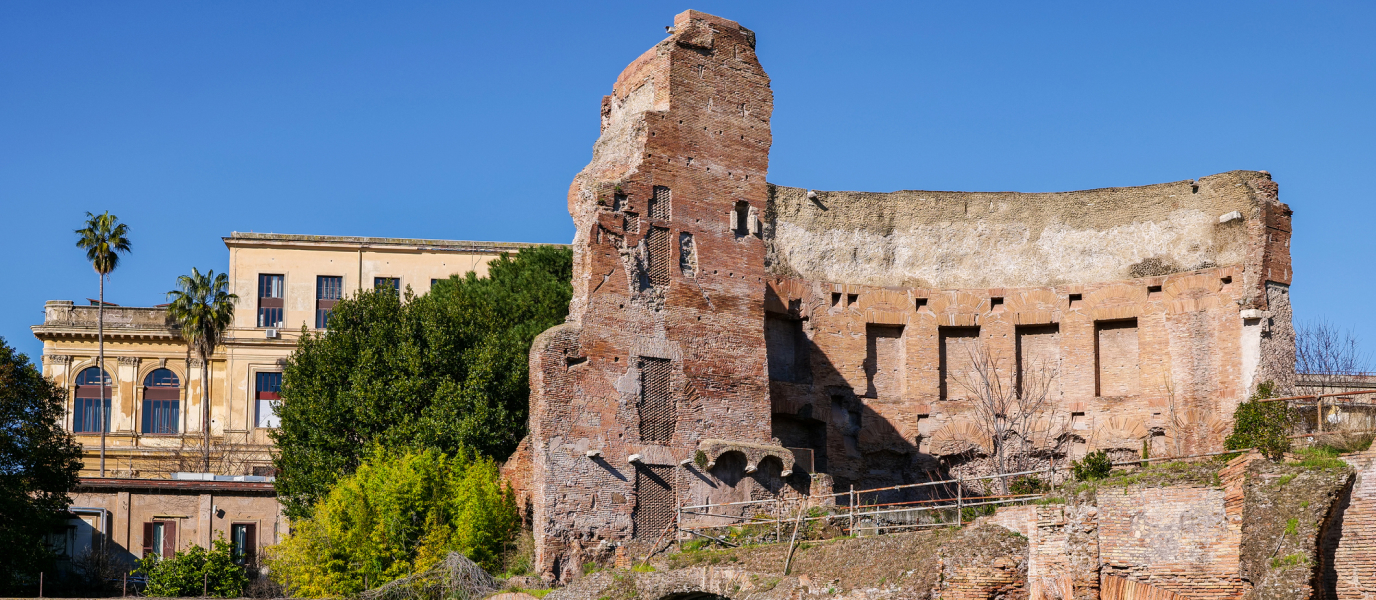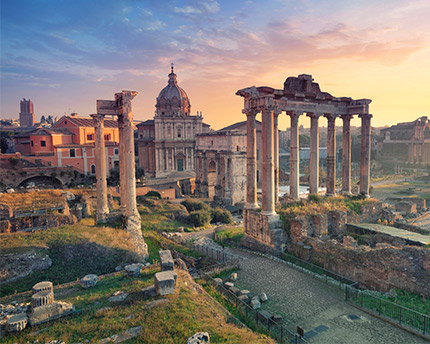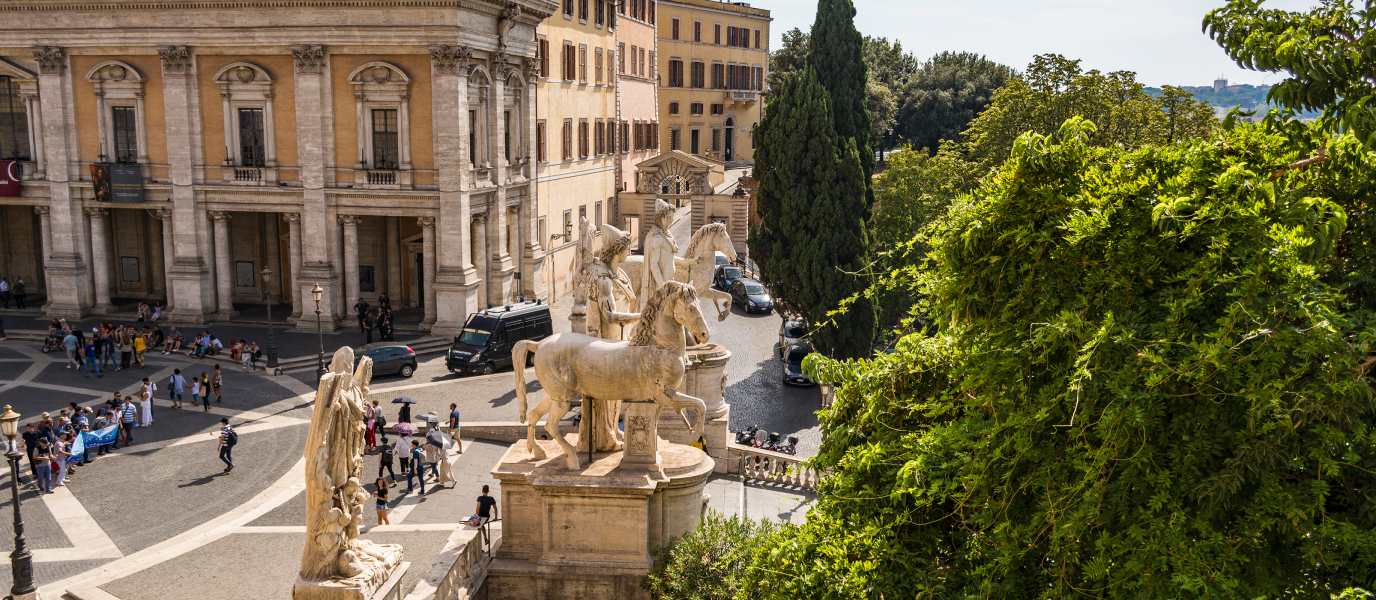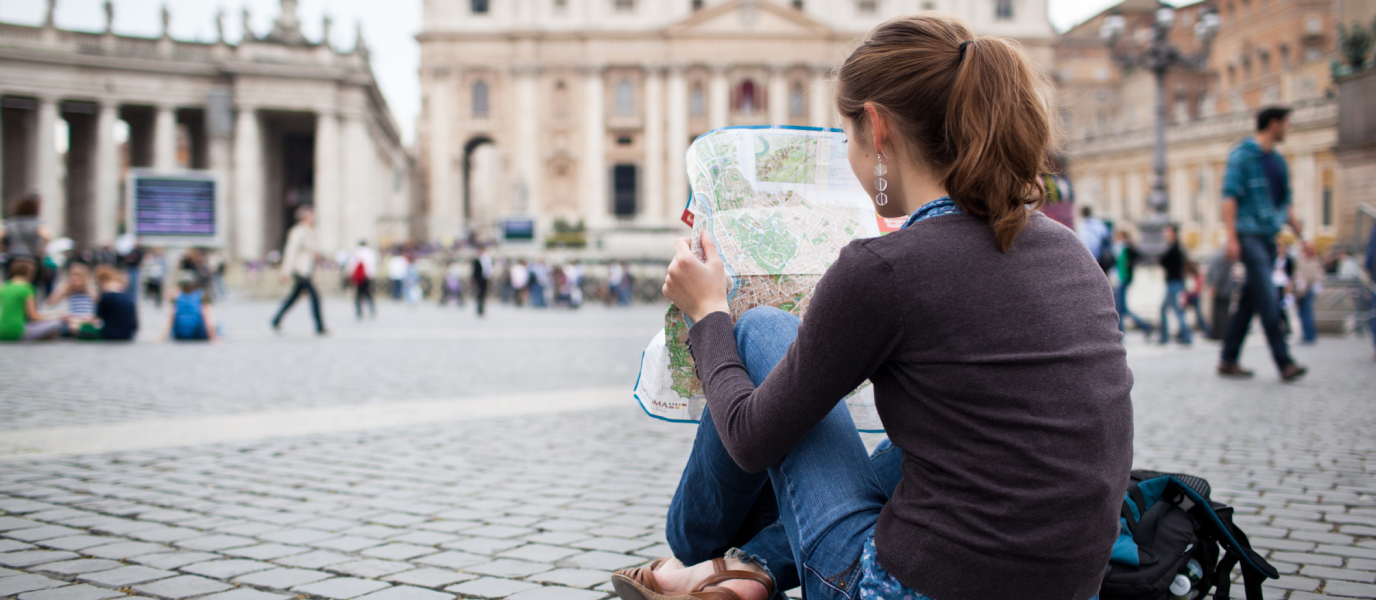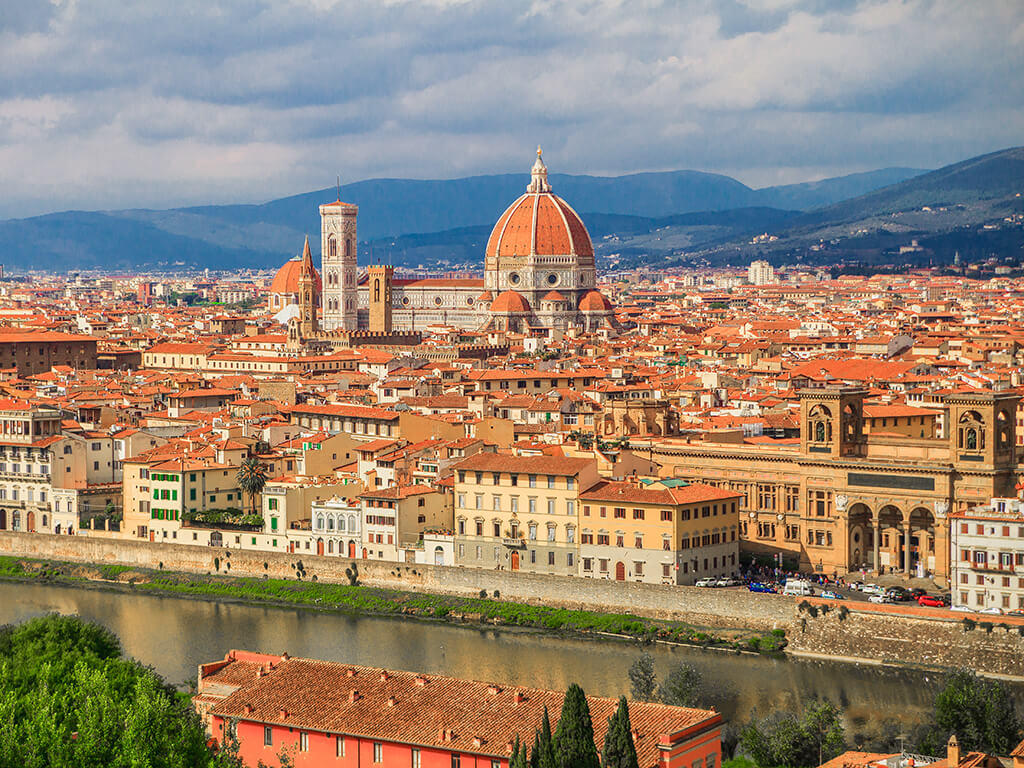Domus Aurea was built following the great fire of 64, commissioned by Emperor Nero. Upon his death, Nero’s successors were quick to obliterate the resented complex, considered to be Nero’s pleasure house, and erase an egregious chapter of Imperial Rome’s history. The parts that survived remained hidden for centuries before being rediscovered.
The absolute immensity, artistic mastery and sheer opulence of the stuccoed ceilings and walls awed Renaissance artists upon its discovery at the end of the 15th century. The palace was dubbed the Golden House because of the extensive application of gold leaf to the frescos and stuccoed ceilings. The name of the palatial complex could not be better chosen or suited.
The Domus Aurea is open to the public but access is restricted due to ongoing renovation work. It is best to book your ticket in advance to discover this 2,000-year old archaeological gem.
Domus Aurea: a majestic architectural achievement or an exponent of Nero’s debauchery
Every single architectural and artistic element of the Golden House was beyond colossal or sumptuous. The behemothic palatial complex occupied one third of Ancient Rome, which is about 25 times the size of the Colosseum, and was composed of several buildings with majestic arcades; an artificial lake; groves of trees; and all types of exotic animals. A pompous colonnaded approach and vestibule were constructed, within which stood a colossal statue of Nero. The Roman historian Tacitus reported that Nero organised a massive public orgy and forced noble women to prostitute themselves in brothels, which represented the disintegration of Roman morals.
Rome had become a moral cesspool during Nero’s reign and his successors were keen on erasing all traces of his debauchery upon his death. Some parts of the palatial complex were buried while others were put to public use. Roman Emperor Vespasian drained the artificial lake and ordered the construction of the Colosseum. His successors, Tito and Trajan, both built city baths over the grounds. These ruins can be visited today. Hadrian erected the Temple of Venus where the vestibule had been located. A fire in 104 took care of the rest, practically erasing any trace of the Domus Aurea.
The ruins of Domus Aurea
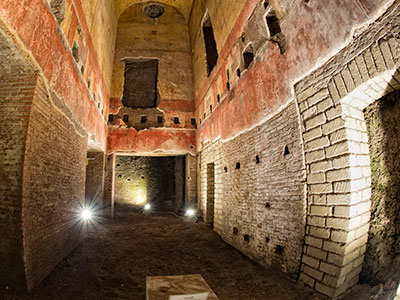
Domus Aurea was forgotten until the ornamented frescos in the caverns of the palace were rediscovered in the 15th century. The ruins are located below the Baths of Trajan and are the only part of the palace open to the public (booking required). However, a tour of the ruins gives you a sense of the grandeur of the vaulted rooms whose frescos once inspired the likes of Michelangelo and Raphael.
The palatial rooms were decorated according to the Pompeian Styles, characterised by the use of red, green, blue and white, and flower motifs. Niches housed incredible classical Greek statues, including the famous ancient sculpture of Laocoön and His Sons, which is on display at the Vatican Museums.
The tour also offers an immersive 3D virtual reality experience and is an incredible way to step back into classical antiquity and see what the Domus Aurea actually looked like when it was first built. The Octagonal Hall with the ‘eye’ in the dome open to the sky was an architectural innovation for the use of concrete for vaulting. It was located at the centre of the palace and had revolving decorations of ivory, wood and cloth hanging from the ceiling, powered by slaves, and showered guests with flower petals and perfume.
The rise of Renaissance grotesque
The term grotesque refers to the type of decoration found in grotte, Italian for caverns or caves. These designs were found in the caverns of the Domus Aurea and later adapted as an art form during the Renaissance. The frescos adorning the walls of the caverns proved to be an indispensable revelation to Renaissance artists; they would descend through a hole to marvel at the artistic mastery of Imperial Rome.
Nero: the architect behind Domus Aurea
History depicted the Roman Emperor Nero as an unstable madman who perhaps orchestrated the Great Fire of Rome for his own megalomaniac ambitions. However, modern-day historians have challenged the black legend that precedes Nero.
Agrippina: the mother with a deadly culinary touch
Nero was born in 37 to Gnaneus, a Roman politician, and Agrippina the Younger, niece and future wife of the Roman Emperor Claudius. His great-grandfather Augustus was the first emperor of the Julio-Claudian dynasty. When Agrippina became Empress, she used her position to convince Claudius to adopt and name her son, Nero, his successor instead of Claudius’ own son and legitimate heir, Britannicus. Claudius is believed to have been murdered by Agrippina. Legend has it she served him a dangerously delicious dish of mushrooms – but of the poisonous sort.
Seneca: Imperial advisor to a teenage emperor
Nero became emperor in 54 when he was 16 years old. His mother appointed Seneca, a Roman statesman and Stoic philosopher, as his tutor. Although he was a Stoic, his affinity for wealth and usury contrasted drastically with Stoicism. In any case, he helped establish peace and prosperity in the empire during the first five years of Nero’s reign.
The young emperor was more interested in the arts – especially poetry and music – and partying it up at the most infamous taverns and brothels in Rome, than in ruling an empire, leaving Seneca in charge. Petronius, author of Satyricon, was a Romanesque Dorian Gray and Nero’s wingman in the Emperor’s love of fast living. His marriage to Claudia Octavia, Claudius’ daughter, did little to stop him from engaging in licentious behaviour.
Matricide and a reign of terror
The early years of peace and prosperity were shattered when Nero fell in love with Poppaea Sabina. Agrippina, his mother, strongly opposed Nero divorcing his wife, so Poppaea used intrigues to induce Nero to murder Agrippina, so she could become empress. Nero sent a hitman to murder his mother and when she was about to get stabbed, she is reputed to have instructed the assassin to stab her in the abdomen, the part of her body that had given birth to her ruthless son. With Agrippina gone, it was easy for Poppaea Sabina to convince Nero to divorce, banish and eventually murder his first wife.
From that moment on, Nero combined his duties as emperor with duties of charioteer and tenor. He would also force senators to take part in these types of recreational activities. He deified himself as a living god, just as Caligula had done years before. He believed he was untouchable and answered to no one as that would have made him a mortal. He inflicted fear and terror in the empire, much of it perpetrated by Poppaea.
The suspicious fire and the persecution of Christians
Nero had a bee in his bonnet about the urban planning of Rome. He felt it was insufferable and needed remediating. However, his concerns for the city hid a much more self-serving purpose: the construction of a Golden Palace. It was absolutely impossible to build such a complex in the city centre because not a single square foot was available. Then, a devastating fire broke out, burning two thirds of the city to the ground and killing one third of the population. This appeared to be too convenient. Nero was never formally accused of being responsible for the fire because no real proof was ever produced. In fact, he was out of town in Anzio when the fires broke out and when he heard the news, he rushed back to organise relief efforts. However, this didn’t change people’s belief that he was the pyromaniac behind the fires so he could build his sprawling palatial complex.
When Nero became aware that he was being blamed for the fires, he immediately looked to find a scapegoat and he found one in the nascent Christian community. Nero accused Christians and they were brutally executed: they were used as bait at the circus, crucified or burnt alive. One of the Christian’s Nero crucified was Saint Peter. His burial place is where St. Peter’s Basilica.
The construction of Domus Aurea
The Great Fire of Rome provided Nero the perfect opportunity to rebuild the city centre according to his vision. He commissioned the construction of Domus Area and it took four years to build. However, Nero was only able to enjoy his pleasure palace for a few months.
The end of the Julio-Claudian dynasty
The governors of Hispania and Gaul, supported by the Senate, rebelled against Nero. The Senate declared Nero a public enemy and he was to be executed according to tradition, by beating him to death. Terrified, Nero wanted to take his own life away but lacked the will. He forced his private secretary to do the honours. Nero’s final words were: ‘What an artist dies in me’. He was only 30 years old. He was buried in the Mausoleum where now stands Santa Maria del Popolo and his tomb was covered with fresh flowers for many years. His death brought an end to the first Roman imperial dynasty, the 80-year old Julio-Claudius dynasty – one of the most callous, fascinating and influential dynasties of history.




































































